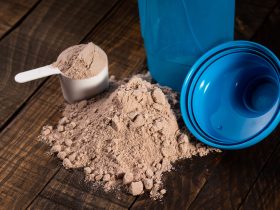Basal Metabolic Rate (BMR):
Basal metabolic rate (BMR) is the amount of energy expended while at rest. Use this calculator to find out your BMR, determine your caloric needs, and lose or gain weight.
What Is Basal Metabolic Rate?
Everybody requires a minimum number of calories to live. This minimum number is called the basal metabolic rate (BMR). Your BMR is the number of calories your organs need to function while you perform no activity whatsoever. You can think of it as the amount of energy you’d burn if you stayed in bed all day.
Since your basal metabolic rate is based largely on involuntary functions like breathing and pumping blood, changes in your day-to-day activity don’t do much to raise or lower this number. However, increasing muscle mass does increase BMR, because muscle is metabolically “hungry” and it takes more energy to maintain more muscle. This means that when you have a lot of muscle mass, you’ll burn more calories at rest.
Why Does Your BMR Matter?
Once you know your BMR, you can use it to calculate the calories you actually burn in a day. From there, you can determine how many calories you need to eat to gain muscle, lose fat, or maintain your weight.
The overall number of calories your body uses on a daily basis is referred to as your “total daily energy expenditure” (TDEE). It’s determined based on your BMR as well as your activity level throughout the day. This varies significantly based on your activity level, age, and sex. Generally, men have a higher TDEE than women because they have more muscle mass, and both TDEE and BMR tend to fall regardless of gender as you age.
You can use a TDEE calculator to find this number or calculate it manually to get a more specific result. Keep in mind, though, that it’s impossible to know your exact TDEE, as your activity levels will change day to day, and the only way to get 100 percent accurate BMR numbers is through laboratory testing.
What’s The Difference Between BMR And RMR?
The term BMR is sometimes used synonymously with RMR, which stands for “resting metabolic rate.” The difference is that while BMR only measures basic processes of breathing, blood circulation, and temperature regulation in a completely resting state, RMR also includes energy expended by digestion and non-exercise daily movements, like getting dressed and lifting your fork to your mouth.
Since the calories you burn digesting food and doing things like brushing your teeth tend to stay around the same range on most days, either number can be used when you are just trying to get a rough estimate of how many calories you burn not including your workouts. Unless you’re being tested in a lab environment, both of these numbers will only be estimates, but they can still give you targets to shoot for when you structure your meal plan and workouts.
BMR and RMR numbers are typically close enough to be interchangeable, but if you’re calculating your needs in order to gain or lose weight, pay attention to which number an equation calls for
How To Use Your BMR To Lose Fat Or Gain Muscle
Once you use your BMR to determine your TDEE, you can make sure that the nutrition plan you follow is appropriate for your level of energy expenditure and that it isn’t giving you too many or too few calories. Being armed with this knowledge, rather than guesstimating or blindly following a plan without scaling it to your individual needs, can make or break your muscle gains or fat loss.
